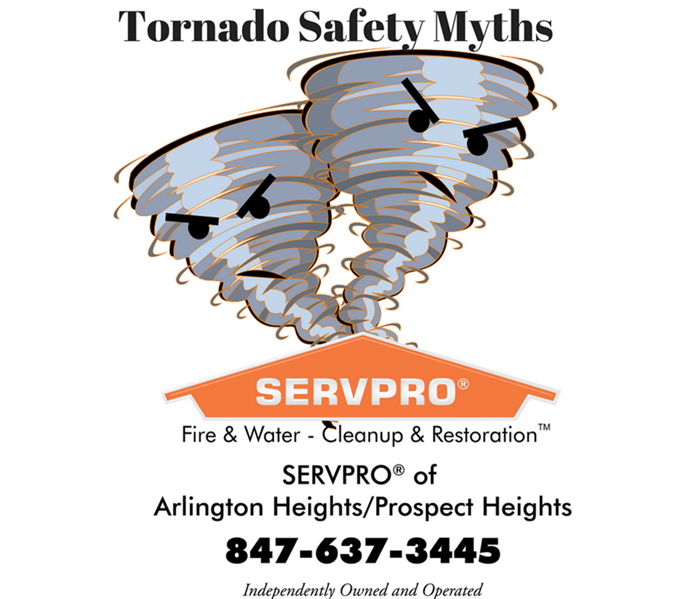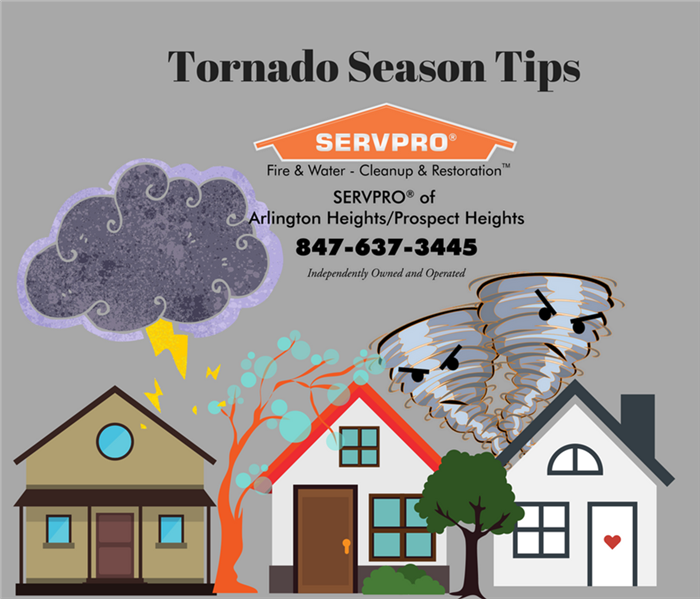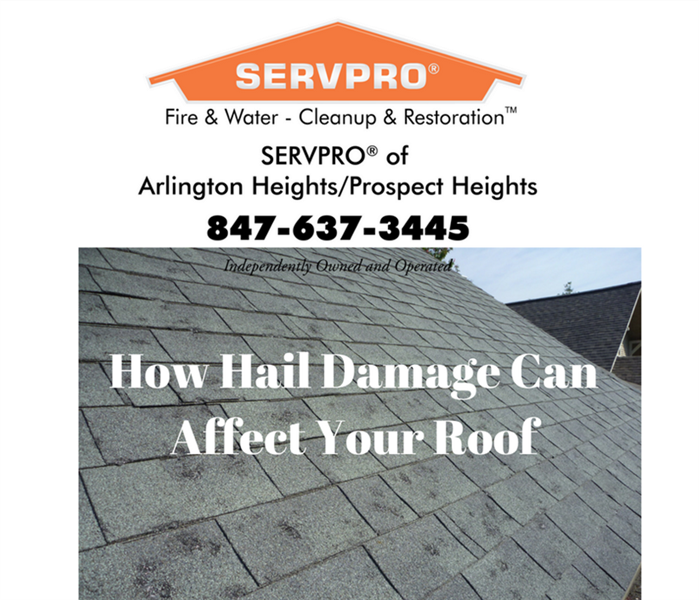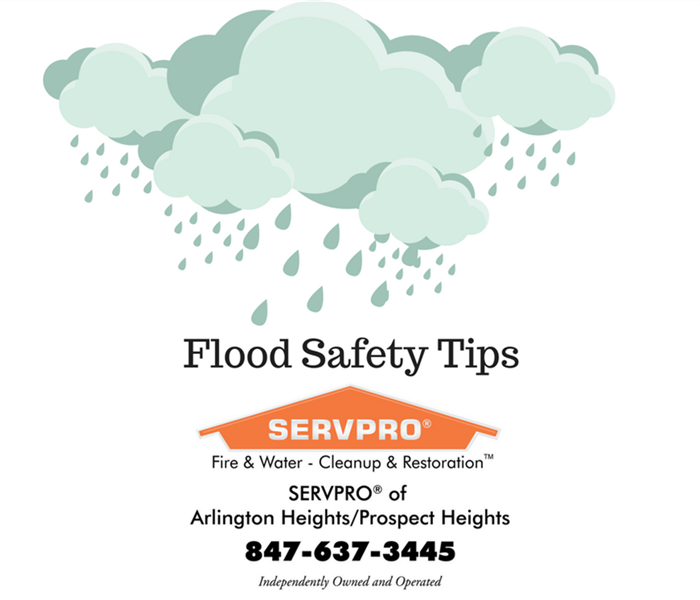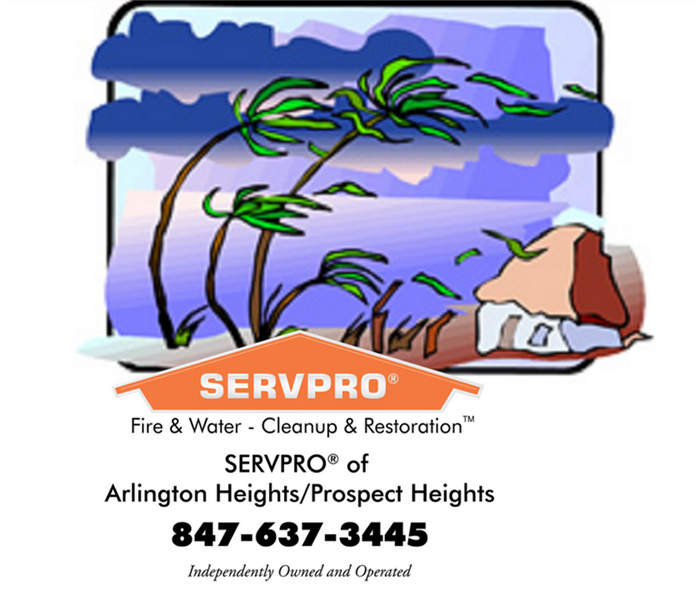Archived Storm Damage Blog Posts
Expected Arctic Blast
1/16/2025 (Permalink)
Weather Forecast Update
Brutally cold air from Siberia, near the Arctic Circle, is expected to sweep southward over Canada late this week, reaching the northern US by the early hours of Saturday morning.
Potential Impact
This sudden drop in temperatures can lead to burst pipes, as the freezing conditions can cause water inside pipes to expand and ultimately rupture.
How SERVPRO Can Help
If you experience water damage due to burst pipes, SERVPRO is here to assist! They provide rapid water removal and restoration services, ensuring your home is safe and dry in no time. Don't hesitate to reach out for professional help to mitigate any damage caused by the cold snap!
Cook County Issues Disaster Proclamation for September Flash Flooding in South Suburbs: How SERVPRO™ Can Help
10/5/2023 (Permalink)
In September, the south suburbs of Cook County experienced severe flash flooding, causing significant damage to homes and businesses. To address the magnitude of the situation, Cook County issued a disaster proclamation. In this blog post, we, at SERVPRO™, will shed light on the impact of the flash flooding, discuss the importance of disaster response, and highlight how our services can assist in the recovery process.
Understanding the September Flash Flooding: The September flash flooding in the south suburbs of Cook County was a result of heavy rainfall and overwhelmed drainage systems. This natural disaster led to flooded basements, water damage, and potential health hazards due to contaminated water. The effects of such flooding can be devastating, causing structural damage, mold growth, and the loss of personal belongings.
Importance of Disaster Response: When faced with a disaster like the September flash flooding, it is crucial to have a well-coordinated disaster response plan in place. Immediate action is necessary to mitigate further damage, ensure safety, and begin the recovery process. This is where SERVPRO™ can play a vital role in assisting homeowners and businesses affected by the flooding.
How SERVPRO™ Can Help:
Emergency Services: SERVPRO™ provides 24/7 emergency response services to mitigate the damage caused by flooding. Our trained professionals are equipped with the necessary tools and expertise to quickly extract water, dry affected areas, and prevent further damage.
Water Damage Restoration: Our team specializes in water damage restoration, ensuring that affected properties are thoroughly dried and restored to their pre-flood condition. We use advanced equipment and techniques to address not only visible water damage but also hidden moisture that can lead to mold growth.
Mold Remediation: Excessive moisture from flooding can create an environment conducive to mold growth. SERVPRO™ offers professional mold remediation services, following industry standards and guidelines to safely remove mold and restore indoor air quality.
Content Cleaning and Restoration: We understand the sentimental value of personal belongings damaged by flooding. Our experts employ specialized techniques to clean and restore affected items whenever possible, helping you salvage cherished possessions.
Comprehensive Solutions: SERVPRO™ provides a range of services, including debris removal, structural repairs, and odor removal. Our goal is to offer comprehensive solutions to ensure a smooth recovery process for our customers.
Conclusion: The September flash flooding in the south suburbs of Cook County necessitated swift and effective disaster response. SERVPRO™ is committed to assisting homeowners and businesses affected by such natural disasters, providing expert water damage restoration, mold remediation, content cleaning, and comprehensive solutions. Our team is ready to respond 24/7, helping you recover and restore your property after the devastating effects of flooding.
If you have been impacted by the September flash flooding, don't hesitate to reach out to SERVPRO™ for professional assistance. We are here to support you during these challenging times.
Stay safe, stay resilient, and remember that SERVPRO™ is here to help you rebuild.
Best regards,
The SERVPRO™ Team
Hurricane Fiona Lands in P.R
9/19/2022 (Permalink)
A hurricane is a type of tropical cyclone, which forms over tropical or subtropical waters. Earlier this year in May the Forecasters at NOAA’s Climate Prediction Center, a division of the National Weather Service, predicted above-average hurricane activity this year, making it the seventh consecutive above-average hurricane season. September 10th marks the official peak of hurricane season and just as peak season begins hurricane “Fiona” recks throughout Puerto Rico on September 18th. Destructive winds and life-threatening flash floods and mudslides. The catastrophic storm left the entire island of Puerto Rican without power. Hurricane Fiona continues to reck Havok on the Atlantic islands at it travels to the Dominican Republic. Updates are still continuing, however, Additional strengthening is expected on today, September 19th, and Tuesday, as Fiona moves over the southwestern Atlantic, according to the NHC.
Here are some suggestions on how to be ready for a hurricane in your location now that we are officially just at peak of hurricane season.
- Create a plan: If evacuation is required, shut off all utilities and abide by local preparedness policies for disasters. Make sure to choose a location where the entire family can congregate. Make sure your pets have a plan for evacuation as well.
- To make the exterior secure, trim any sizable trees and bushes. Bring inside all of the outdoor patio furniture, plants in pots, bikes, and toys.
- Install storm shutters: These will provide adequate shutters or impact-resistant glass to protect your windows, doors, and skylights.
- Examine your art and wall hangings: Ensure that all of your wall hangings are stable and make notes on your artwork.
- Reposition your vehicles: Park them in your garage against the garage doors or keep them on higher ground.
- Electricity up: Fill up the gas tank in your car, check that all of your cell phones are charged, test your generator, and keep plenty of fuel on hand in case the power goes out.
- Keep critical documents in a safe deposit box in your home's closet. Examples of such documents are legal paperwork, birth certificates, marriage licenses, insurance policy information, and any valuables.
Prepare an emergency kit by gathering all flashlights, portable radios, batteries, non-perishable food, bottled water, money, blankets, toiletries, and clothing.
- Locate a shelter room. This space should be on the first floor, in the interior of the house's center, away from any windows.
At SERVPRO, we recognize that when a disaster happens, you never know what the aftermath will leave behind. Anytime you require services for rebuilding or damage control, we are always here to help!
Preparation for tornadoes
9/14/2022 (Permalink)
Knowing what kinds of catastrophes might occur in your area is crucial when creating a strategy for when they do. Know how you will get in touch with one another and re-connect if you become separated. Establish a comfortable and convenient location for family gatherings. Ensure that you have the following.
1. A method of receiving alerts and cautions in case of emergency
2. Shelter strategy
3. The evacuation path
4. Plan for household and family communications
5. Update your emergency supply kit
Next, you should think about the unique needs of your home. Be careful to establish your requirements and obligations as well as how the network's members can help one another with communication, kid, business, or pet care, or with more specialized needs like operating medical equipment.Be careful to establish your requirements and obligations as well as how the network's members can help one another with communication, kid, business, or pet care, or with more specialized needs like operating medical equipment. When creating your plan, bear some of the following things in mind:
- Your family's members are of varying ages.
The duties entailed in helping others
- visited areas
diet requirements
- medical requirements, such as medication and supplies
- Access and functional needs, such as those for devices and equipment, or disabilities
spoken languages
- Considerations of culture and religion
service animals or pets
- families with children in school.
Rain, storms and flooding are seemingly becoming more frequent across the world.
8/9/2022 (Permalink)
Rain, storms and flooding are seemingly becoming more frequent across the world. Many areas in the United States are experience record breaking rainfall and flooding. Many Americans are becoming open minded to the idea of climate change as a result of global warming. Nasa has produced articles on the evidence, causes, effects and solutions of climate change.
According to Nasa, “It is undeniable that human activities have produced the atmospheric gases that have trapped more of the Sun’s energy in the Earth system” This allows us to make the educated thought that these gases are warming our planet at a rapid rate. Scientists have predicted that many of the changes that are happening would eventually happen. However, these changes are happening much sooner than they had expected. In NASA’s article Earth Will Continue to Warm and the Effects Will Be Profound the author states “Changes to Earth’s climate driven by increased human emissions of heat-trapping greenhouse gases are already having widespread effects on the environment: glaciers and ice sheets are shrinking, river and lake ice is breaking up earlier, plant and animal geographic ranges are shifting, and plants and trees are blooming sooner” These are some of the effects of climate in happening rapidly in the recent years many of which may seem to be attached to the recent growth in natural disasters.
In the article Flooding and Climate Change: Everything You Need to Know the author states “Floods are the most common (and among the most deadly) natural disasters in the United States. They have brought destruction to every state and nearly every county, and in many areas they are getting worse.” We can see examples of this in parts of central Illinois and St. Louis, Missouri where severe storms have been recking havoc on residents and leaving hundreds homeless or displaced with flood damage.
Many Americans are preparing for a new Federal climate bill that could have a direct impact on a variety of climate measures. The bill offers a variety of tax credits focusing heavily on the push towards the use of low-carbon technologies. According to the article How The Federal Climate Bill Could Impact Proviso Suburbs, The new initiative — which was spearheaded by Broadview Mayor Katrina Thompson, Oak Park Village President Vicki Scaman and River Forest President Cathy Adduci — puts participating suburbs on the hook for achieving a 100% reduction in greenhouse gas emissions by 2050. This should be viewed as a great accomplishment as the village of Broadview is recently recovering from major storms that left the village in a state of emergency a few weeks ago. Read more about that here. https://www.SERVPROlagrangeparknorthriverside.com/blog
References:
Jackson, R. (2022). The Effects of Climate Change. Climate Change: Vital Signs of the Planet. Retrieved August 9, 2022, from https://climate.nasa.gov/effects/
Denchak, M. (2019, April 10). Flooding and Climate Change: Everything You Need to Know. NRDC. Retrieved August 9, 2022, from https://www.nrdc.org/stories/flooding-and-climate-change-everything-you-need-know
thevillagefreepress@gmail.com. (2022, August 8). How The Federal Climate Bill Could Impact Proviso Suburbs. Village Free Press -. Retrieved August 9, 2022, from https://www.vfpress.news/articles/energy/how-the-federal-climate-bill-could-impact-proviso-suburbs/?fbclid=IwAR1bmCcfdVK9VzDYxX9n_DlHWuoDIMYgqzsIBOuim2HGeDKVRGWDcCLOQfQ
Storms in The Area August 8th
8/8/2022 (Permalink)
This morning August 8th 2022, the Chicagoland area including Arlington heights were met with early morning storms. Heavy rainfall is moving across Illinois pouring at the rain tides at more than 2 inches per hour states weatherman and meteorologist, Mike Caplan of FOX 32 Chicago. However, we are looking forward to a wind shift to blow the storms away and bring in some much less humid air for tomorrow. In any case our highly trained Disaster Recovery Team specializes in property damage restoration, water damage restoration and fire damage restoration. Our team utilizes advanced technologies alongside The Institute of Inspection’s cleaning and restoration industry standards to provide exceptional service. We believe in continuous training from initial and on-going training at SERVPRO’s corporate training facility to regular IICRC industry certifications. Rest assured our staff is equipped for any of your clean-up, restoration, and construction needs.
References:
Caplan, M. (2022, August 8). Storms dominate Chicago area Monday with small flooding risk. FOX 32 Chicago. Retrieved August 8, 2022, from https://www.fox32chicago.com/weather/storms-chicago-monday-flooding
Be Prepared for the Next Winter Storm With These Tips!
1/5/2022 (Permalink)
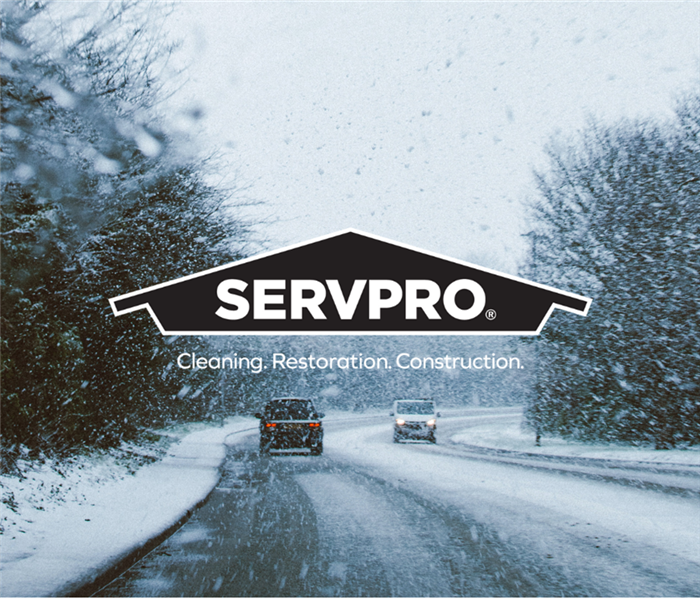 Before the next winter storm arrives, get your car's antifreeze levels, battery, ignition system, exhaust system, heater, lights, and oil checked.
Before the next winter storm arrives, get your car's antifreeze levels, battery, ignition system, exhaust system, heater, lights, and oil checked.
Winter storms can bring not only a lot of snow, but also bitterly cold temperatures, strong gusts, freezing rain, and ice. They can bring down trees, make roads and pathways extremely unsafe, and produce power outages that linger for days. Schools and daycare facilities may be closed as a result of the disruption to public transit. Winter storms also increase the likelihood of car accidents, hypothermia, frostbite, carbon monoxide poisoning, and heart attacks.
That's why, with winter storm season in full swing, knowing how to protect yourself, your family, and your house safe is essential.
Here are some things you can do now to prepare for the impending storm.
1. Make sure you have enough food in your pantry.
Because it's critical to stay indoors and avoid traveling during a winter storm, making sure you're well-stocked on food is critical. Many non-perishable things should be in your pantry so that you don't have to worry about anything deteriorating if you lose electricity. Ideally, you should have enough food to last at least three days.
2. Buy Bottled Water
Make sure you have plenty of bottled water on hand in case your pipes freeze and you can't get water from the tap. You may also require water for brushing your teeth, cleaning dishes, flushing toilets, or bathing if your pipes freeze. You can also prepare ahead of time by filling the bathtub, jugs, bottles, and other containers with water.
3. Get your prescriptions filled and hygiene items picked up
Make sure all of your prescription drug prescriptions are filled so that you have enough on hand to last at least three days, if not a week. This eliminates the need to rush to the pharmacy when the roads are poor.
You should also stock up on any hygiene products you may require, like as diapers, toilet paper, tampons, and toothpaste. Picking up moist toilet paper can also be beneficial if water is scarce.
4. Check your tools and stock up on ice melt.
Ice melt salt sells out quickly in local stores just before a storm, so start buying up early to ensure you have enough for after the storm. You'll need enough to shovel and salt all of your outside stairs, stoops, and walkways immediately following the storm, before the snow melts and turns to ice as the temperature drops.
Before the storm hits, make sure you have a good snow shovel (or two). Make sure they aren't too worn or cracked, as this will only complicate your life. You'll also want to make sure your tool kit is up to date and simple to locate, since you may need a wrench or pliers to quickly turn off utilities.
5. Be Prepared For A Power Outage
Charge your cell phones in advance of the storm, and have some portable battery backups available in case the power goes out. It's also a good idea to keep flashlights or battery-powered lights around the house so you don't have to waste time looking for them.
If you live in a region where power outages are common, you should consider purchasing a generator, either a portable or a standby one for your home. If you have a portable generator, make sure you have enough gasoline or propane before the storm to operate it whenever and for as long as you need it. Always use portable models outside, away from windows, and never use them indoors or in confined locations like garages, crawl spaces, or basements.
6. Take Care of Your Water Pipes
Allow cold water to flow from faucets supplied by exposed pipes to help prevent frozen pipes. Running water, even at a trickle, is less likely to freeze. Allow warm air to circulate near plumbing by opening cabinet doors in the kitchen and bathroom. Pipe insulation should be added to any pipes that are prone to freezing. Maintain a temperature of no less than 55 degrees Fahrenheit inside your home.
7. Make sure your windows and doors are well-sealed.
Drafty windows and doors let chilly air in while letting warm air out. That's why it's a good idea to use an insulation kit from any hardware shop to seal any windows. Weatherstripping can also be purchased at the store to improve the seal on your front door.
Insulated blinds are also available to help keep the warm air inside the house.
8. Inspect and replace smoke and carbon monoxide detectors if necessary.
Make that your smoke and carbon monoxide alarms are still operational. It's advisable to replace them with detectors that work during a power outage if they aren't already battery-powered or battery-backed to keep your family safe.
9. Get Your Backyard Ready
Take a trip around your yard before the storm to check for any tree limbs that could fall on your house. If you have the ability, you should prune those back to prevent them from causing damage to your property during the storm – or hire someone to do it for you.
If any tree branches are near power lines, you should get them trimmed or chopped back by a professional or the utility to assist reduce the danger of a power outage.
Mulch your gardens, if you haven't already, to protect plants that you don't want to freeze.
10. Get Your Car Ready
Before the next winter storm arrives, get your car's antifreeze levels, battery, ignition system, exhaust system, heater, lights, and oil checked.
Then, in case you're trapped in your automobile due to the blizzard, prepare your car with items you might require. Blankets, water, chains, jumper cables, ice scrapers, maps, bottle water, warm clothing, non-perishable snacks, and a first-aid kit should all be in your car. It's also a good idea to have some sand or kitty litter on hand in case you get stranded in the snow or ice.
11. Keep yourself up to date
Listen to your NOAA weather radio for hazardous weather alerts and warnings. Always keep an eye on the weather forecast, whether it's on the internet or on your phone. Sign up for emergency alerts and updates in your area.
In the event of an emergency, know how to cut off your utilities, such as gas lines.
Before the storm strikes, do some research on nearby shelters and warming centers, and establish a plan for where to go and how to get there if you need to leave your house in an emergency.
Also, be aware of the symptoms of hypothermia and frostbite, and be prepared to check on your neighbors, particularly if they are elderly or have young children who are more vulnerable to the cold.
How to Stay Safe During a Wind Storm!!
11/1/2021 (Permalink)
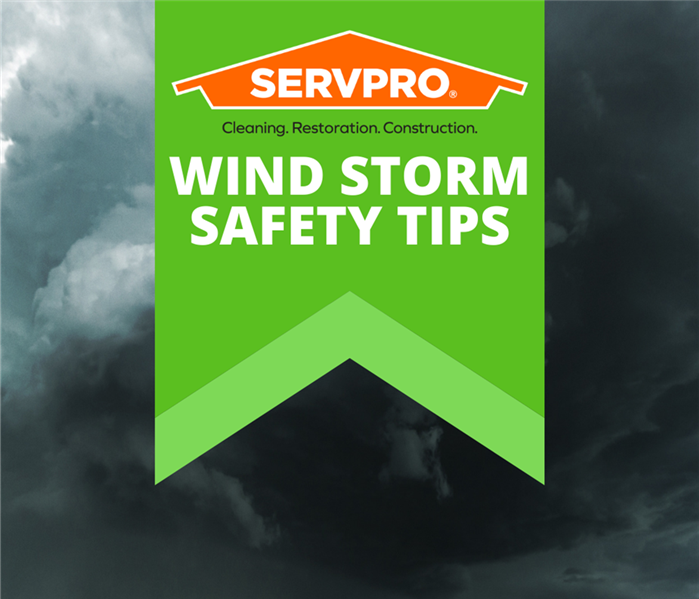 Wind Storm Safety Tips
Wind Storm Safety Tips
Winds can reach speeds of more than 100 miles per hour during extreme weather events such as tornadoes!
High winds of any speed can cause damage to homes and property, as well as flying debris and shattered glass, which can cause injuries. A disaster preparedness plan for your family, including a disaster survival kit and an emergency evacuation plan, can save your family from injury and inconveniences.
Keep yourself updated!
Weather updates and advisories will be broadcast on the radio and television. Having the most up-to-date information is critical to keeping safe during a weather event. For updates, utilize an NOAA Weather Radio or battery-powered radio, and keep an eye out for mobile alerts.
A high wind alert indicates that persistent winds of more than 25 mph are expected.
Warnings for thunderstorms and tornadoes should be taken seriously since they indicate that severe weather has been detected and is on its way.
During bad weather, seek cover!
- Remove yourself from windows and glass doors and into the center of your house or basement. Take refuge under a stairwell or a large piece of furniture.
- During heavy winds, do not stay in a mobile home. High winds can easily topple them, and flying debris can penetrate their light frames and exteriors.
- Make a safe room for yourself. If you live in a location where violent winds are common, you should consider constructing a safe room in your home.
Protect your home against extreme weather and wind events with these helpful tips!
- Vehicles that you want to leave behind should be parked or stored in a garage. If you don't have a garage, relocate your belongings to higher ground in the event of flooding.
- Garbage cans, patio furniture, barbecues, and other potentially wind-borne items should all be kept inside your house or garage.
- Close the doors and windows to your home. In the event of severe winds, board up windows and glass doors with shutters or plywood to prevent harm from broken glass.
- Secure your outdoor pool and turn it off. To avoid damage, turn off the circuit breaker for your outdoor pool and remove the engine.
- Tree branches that pose a danger should be removed. Pruning branches that may break off during a storm and injure someone or cause damage to your home or vehicles is a good idea.
- A generator can be rented or purchased. A generator can assist keep refrigerators, freezers, and lights running if you can rent or buy one. A severe storm can knock out power for days, if not weeks, at your home.
- Keep an ear out for weather updates on the radio. If you are told to evacuate, follow local officials' instructions and head to a shelter.
- Let your friends and family know where you'll be.
If you don't have time to get to a shelter, go to your safe room if you have one. Otherwise, stay in the center of your house or basement, away from windows, and hide under a stairwell or a large piece of furniture.
When storms or floods hit Arlington Heights, SERVPRO is ready!
9/27/2021 (Permalink)
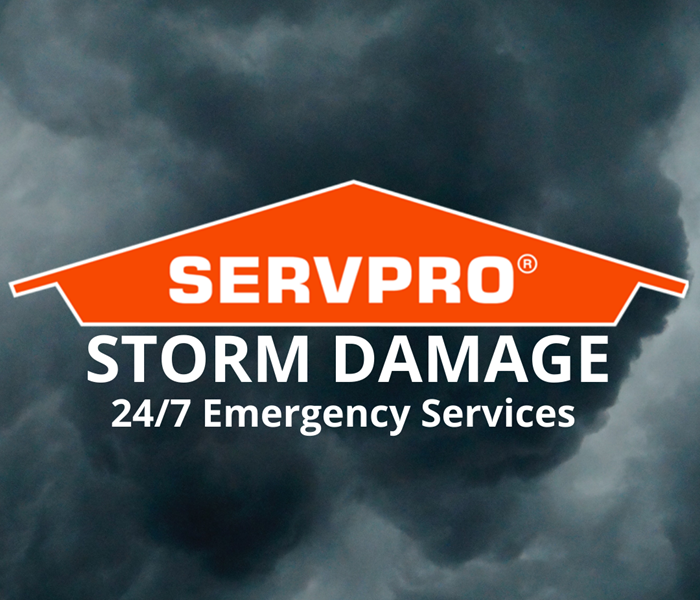 24/7 Storm Damage Emergency Service
24/7 Storm Damage Emergency Service
The effects of a storm or a flood can be catastrophic! You need to act quickly, and you need a professional that has experience with storm damage. SERVPRO Arlington Heights Professionals have the training, equipment, and resources to manage any major disaster and can respond quickly to storm and flooding situations.
What do we provide?
- 24 hour Emergency Service
- Highly Trained Water Damage Specialists
- Resources to Handle Storms and Disasters
Regardless of the Storm Damage, We Can Help!
SERVPRO of Arlington Heights can handle any size disaster, regardless of the type of storm. Our Disaster Recovery Team can respond rapidly with additional resources during major storms and disasters.
- Flooding caused by heavy rains
- Tornadoes and wind damage
- Ice and snowstorms
Have storm or flood damage? Call us at (847) 637-3445!
Hurricane Season 2021
9/13/2021 (Permalink)
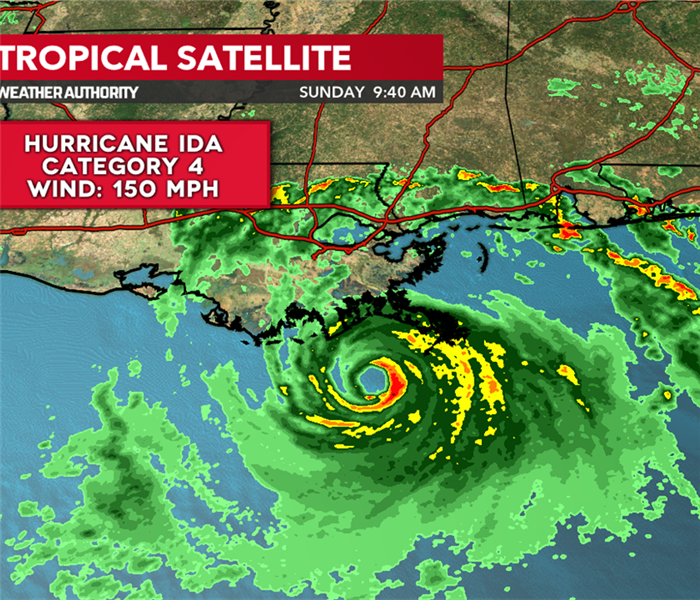 Have a plan and be prepared!
Have a plan and be prepared!
Hurricane season is upon us! Experts say that the hurricane season starts in May and lasts all the way until November on average. Each year is different. However, as on Friday September 10th, it has officially marked its peak of hurricane season for the Atlantic Basin. We have seen during this year there has been 13 named storms, and 5 of those reached a hurricane status and 3 of which became major hurricanes. Here is a list of the 13 hurricanes so far..
1. Ana: Formed near Bermuda on May 22nd
2. Bill: Formed off the East Coast on June 14th
3. Claudette: Formed in the northern Gulf of Mexico June 19th
4. Danny: Formed along the East Coast near Charleston, South Carolina on June 28th
5. Elsa: Formed in the central tropical Atlantic on July 1st
6. Fred: Formed in the eastern Caribbean on August 10th
7. Grace: Formed in the central tropical Atlantic on August 14th
8. Henri: Formed near Bermuda on August 16th
9. Ida: Formed south of Jamaica in the Caribbean on August 26th
10. Julian: Formed far out in the Atlantic on August 29th
11. Kate: Formed in the central, open Atlantic on August 30th
12. Larry: Formed in the far eastern Atlantic on September 1st
13. Mindy: Formed in the northeaster Gulf of Mexico on September 8th
With the knowledge of knowing we have officially hit the peak of hurricane season, here are some tips on how to be prepared for a hurricane in your area.
- Make a plan: If evacuation is necessary, turn off all utilities and follow community disaster preparedness plans. Make sure you select a common meeting place for all family members. Also make sure you have an evacuation plan for your pets.
- Secure the exterior: Trim any large trees and shrubs. Bring in all outside patio furniture, potted plants, bikes and toys inside.
- Install storm shutters: These will protect your windows, doors and skylights with appropriate shutters or impact-resistant glass.
- Check wall hangings and art: Make sure all wall hangings are secure and take notes about your art collection and any existing damage.
- Move your cars: Keep your cars to higher ground or park them in your garage against the garage doors.
- Power up: Fill up your car's gas tank, make sure all cell phones are fully charged, test your generator and always have plenty of fuel ready in case the power goes out.
- Store important documents: Make sure to keep important documents, such as legal papers, birth certificates, marriage license, insurance policy information, and any valuables in a safety deposit box in the closet of your home.
- Prep an emergency kit: You will need to gather any flashlights, portable radio, batteries, non-perishable food, bottled water, cash, blankets, toiletries and clothing.
- Identify a shelter room: This area should be on the first floor in the central part of the house that has no windows.
We here at SERVPRO understand that when disaster strikes, you don't know what will be left from the aftermath. We are always here to help with any mitigation or reconstruction services you may need!
Tornado Watch: BE PREPARED!
8/9/2021 (Permalink)
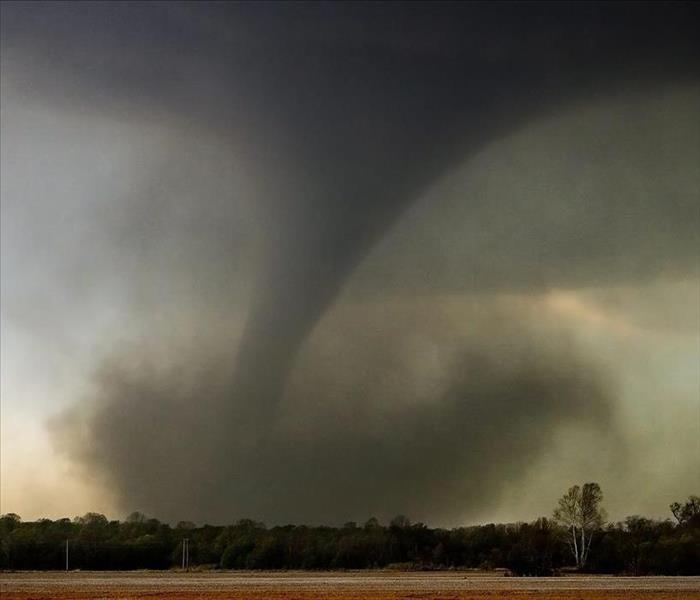 Have a plan!
Have a plan!
There has been ANOTHER tornado watch that has been issued for northern Illinois throughout the afternoon and evening. The watch has been issued until 10PM tonight for over 17 counties in Illinois. Severe storms are possible across northern Illinois and northwest Indiana. There is an area-wide threat for damaging winds, large hail and a couple tornadoes. There will also be heavy rainfall and flooding that can go into overnight. The weather service advises having multiple ways to receive weather warnings. They are also suggesting to have a plan set in place with your family and friends.
When it comes to making a plan for when disaster strikes, it is important to know which types of disasters could affect your area. Make sure to know how you will contact one another and reconnect if separated. Establish a family meeting place that's familiar and easy to find. Make sure to have the following..
1. A way to receive emergency alerts and warnings
2. Shelter plan
3. Evacuation route
4. Family/household communication plan
5. Update emergency preparedness kit
You will next want to consider specific needs in your household. Make sure to discuss your needs and responsibilities and how people in the network can assist each other with communication, care of children, business, pets or specific needs like operating medical equipment. Keep in mind some of these factors when developing your plan:
- different ages of members within your household
- responsibilities for assisting others
- locations frequented
- dietary needs
- medical needs including prescriptions and equipment
- disabilities or access and functional needs including devices and equipment
- languages spoken
- cultural and religious considerations
- pets or service animals
- households with school-aged children
You can never be to prepared when it comes to natural disasters, so please make sure you have a plan in place for when one strikes! Remember that SERVPRO is always here to help to make it look "Like it never even happened." Stay safe!
Flood Warning!
8/9/2021 (Permalink)
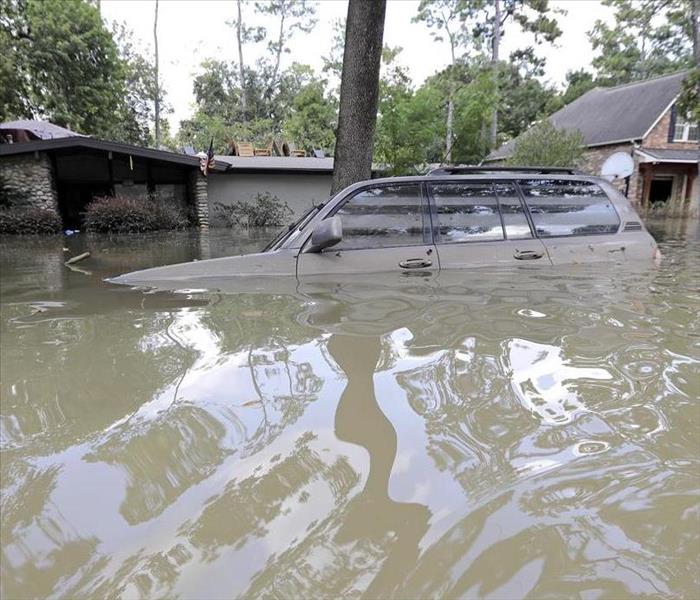 Be prepared!
Be prepared!
With the tornado watch in effective, we also see that there is a flood warning in effective as well. Here are some details on floods and how we can prepare for them, and what to do after they take place.
Flood can happen anywhere, and without much of a notice. According to ready.gov “Just 6 inches of moving water can knock you down, and 1 foot of water can sweep your vehicle away.” Flood Watches and Flood Warnings are available to let you know what the weather is doing in your area. On average, more deaths occur due to flooding each year than from any other severe weather related hazard.
First of all flood watches and flood warnings are two separate alerts to warn about the weather in your area. A flood watch is to make you aware that conditions are possible for flooding. A flood warning means you need to take action to keep yourself and your family safe.
Ready.gov has some safety tips in case you are in an area where there is a flood warning.
- Move immediately to higher ground or stay on high ground.
- Avoid walking or driving through flood waters. Turn Around, Don’t Drown! Just 6 inches of moving water can knock you down and 1 foot of water can sweep your vehicle away.
The water from a flood is only one of the risks. Water and electricity do not mix. In the event of a flood, downed power lines are also possible. Stay away from all power lines. Calling your local utility company is the only thing you should do in the event you see downed lines. Your appliances, if they get wet, should also not be used until they have been inspected by a licenses electrician. The fuse box in the house should be avoided as well as long as there is water in the home.
We may not be able to control weather conditions, but we can take all possible precautions to ensure our personal safety and protect our homes from severe damage. According to ready.gov the following tips can help prepare you for a flood:
- Find out how vulnerable your home is to flooding by determining the elevation of your property.
- Evaluate your insurance coverage once a year to make sure your home is fully covered. As new construction grows in certain areas, more flood-plains are sometimes created.
- If your home is in a flood-prone area, contact the National Flood Insurance program to learn what mitigation measures you can take in advance.
- Contact your local emergency management agency to learn how to construct proper protective measures around your home.
- If you live in a flood-prone area, keep these materials on hand: sandbags, plywood, lumber, plastic sheeting, trash bags, shovels, work boots and gloves.
- Purchase a weather radio. These special, battery-operated radios cost as little as $20 and are available at many hardware and appliance stores and other retail outlets.
- Put together a disaster survival kit. Keep the following supplies near at hand and put them in a water-tight container: flashlight with extra batteries, battery-powered radio and weather radio, first aid kit, medicines, eyeglasses, drinking water, non-perishable foods, change of clothes, cash and credit cards, and copies of all important papers.
- Plan two evacuation routes in advance. Don’t wait until threatening weather conditions occur before trying to determine your route to safety. Be aware of streams, drainage channels and low areas in your region that are prone to flooding, so that your evacuation routes are not cut off.
- Do not park your vehicle near streams or rivers, especially during threatening weather conditions.
SERVPRO of Arlington Heights/N. Prospect Heights wants you to stay safe first and foremost. However, flooding happens, and we are here to help. If you have flood damage in your home, call us at 847-637-3445 for all your water damage needs.
What can happen after an snow/ice storm
1/5/2021 (Permalink)
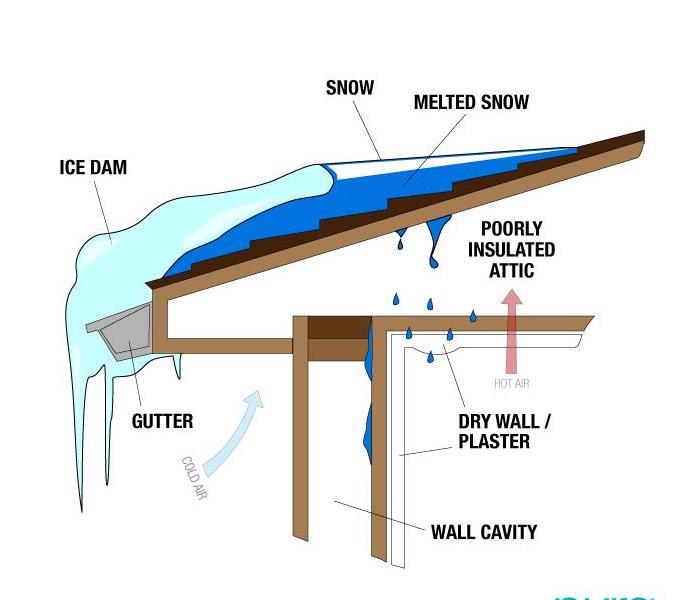 Be aware!
Be aware!
When looking at roofs this winter, icicles hanging along them may look beautiful but can be very dangerous. This is because the icicles forming and snow on the roof can lead to ice dams. This is thick ridges of solid ice that build up along the eaves. Dams can tear off gutters, loosen shingles, and cause water to back up and pour into the building or home. In result, this can lead to peeling paint, warped floors, stained and sagging ceilings. Also, soggy insulation in the attic, which loses R-value and becomes a magnet for mold and mildew.
Here are some ways in order to prevent ice dams. The first is to use heated cables. Attach these with clips along the roof's edge in a zigzag pattern, and the heated cables help prevent ice dams that lift shingles and cause leaks. This solution allows you to equalize your roof's temperature by heating it from the outside instead of blowing in cold air from the inside.
Next is to blow in cold air. Hacking away at ice dams with a hammer, chisel, or shovel is BAD for your roof. Also, throwing salt on them will do more harm to your plantings than the ice. Therefore, take a box fan into the attic and aim it at the underside of the roof where water is actively leaking in. This targeted dose of cold air will freeze the water in its tracks.
You can also rake it by pulling off snow with a long-handled aluminum roof rake while you stand safely on the ground. A rake with wheels will instantly change the exterior temperature of your roof without damaging shingles.
De-icing methods deal with diminishing the damage after the dam has formed. Fill the leg of a discarded pair of panty hose with a calcium chloride ice melter. Lay the hose onto the roof so it crosses the ice dam and overhangs the gutter. You can use a long-handled garden rake or hoe to push it into position. The calcium chloride will eventually melt through the snow and ice and create a channel for water to flow down into the gutters or off the roof.
Lastly is a permanent fix for ice dams. Getting ride of ice dams for good is simple. Just keep the entire roof the same temperature as the eaves. This is done by increasing the ventilation, adding insulation, and sealing off every possible air leak that might warm the underside of the roof.
1. Ventilate Eaves and Ridge
- A ridge vent paired with continuous soffit vents circulates cold air under the entire roof. Both ridge and soffit vents should have the same size openings and proved at least 1 square foot of opening for every 300 square feet of attic floor. Place baffles at the eaves to maintain a clear path for the airflow from the soffit vents.
2. Cap the Hatch
- An unsealed attic hatch or whole-house fan is a massive opening for heat to escape. Cover them with weather stripped caps made from foil-faced foam board held together aluminum tape.
3. Exhaust to the outside
- Make sure that the ducts connected to the kitchen, bathroom, and dryer vents all lead outdoors through either the roof or walls, but never the soffit.
4. Add insulation
- More insulation on the attic floor keeps the heat where it belongs. To find how much insulation your attic needs, check with your local building department.
5. Install sealed can lights
- Old-style recessed lights give off great plumes of heat and can't be insulated without creating a fire hazard. Replace them with sealed "IC" fixtures, which can be covered with insulation.
6. Flash around chimneys
- Bridge the gap between chimney and house framing with L-shaped steel flashing held in place with unbroken beads of a fire-stop sealant. Using canned spray foam or insulation isn't fire safe.
7. Seal and insulate ducts
- Spread fiber-reinforced mastic on the joints of HVAC ducts and exhaust ducts. Cover them entirely with R-5 and R-6 foil-faced fiberglass.
8. Caulk penetrations
- Seal around electrical cables and vent pipes with a fire-stop sealant. Also, look for any spots where light shines up from below or the insulation is stained black by the dirt from passing air.
Understanding the lifecycle of ice damming is key. It starts with the birth, and it is the breakdown of the conditions that lead to the formation of ice dams. First, heat collects in the attic and warms the roof, except at the eaves. Next you move into the growth, and snow begins to melt on the warm roof and then freezes on the cold eaves. Finally is maturity, and ice accumulates along the eaves, forming a dam. Meltwater from the warm roof backs up behind it, flows under the shingles, and into the house.
STORMS IN THE AREA
12/1/2020 (Permalink)
 Get our APP!
Get our APP!
Prepare
Preparing now can minimize property damage and danger caused by flood. First, be sure you have an emergency plan in place that has been communicated to everyone on staff. Stock up on emergency supplies, like sandbags, shovels, sump pumps, and more. Have easy access to a water pump, emergency apparel, such as rain suits, and dehumidifiers.
Have an evacuation plan
Have an emergency kit with battery-operated radio, flashlight, food, and water
Raise up electrical components
Clear debris from gutters and downspouts
Check valves in sewer traps to prevent backup
Seal walls with waterproofing compounds
Respond - 847-637-3445
Recover
Once floodwaters have cleared, it's time to recover and rebuild. We Have the Resources to Handle Storms and Disasters.
In addition to our own resources, we can access equipment and personnel from over 1,700 Franchises across the state and country. We can even call upon strategically located Disaster Recovery Teams for catastrophic storms and major events
What you did and didn't know about tornadoes
11/3/2020 (Permalink)
The Websters Dictionary defines a tornado : "A tornado is as a rotating, funnel-shaped cloud that extends from a thunderstorm to the ground with whirling winds that can reach 300 mph. Damage paths of tornadoes can be in excess of one mile wide and 50 miles long."
According to the study done by The Weather Channel. Each year in the U.S., 1,200 tornadoes on average kill 60 people, injure 1,500, and cause roughly $400 million in damages, putting long-term average tornado losses on par with hurricanes.
There are many misconceptions in regards to tornadoes. Here are some facts from tornadofacts.net
Tornado Safety Related Myths
- Southwest corner of your home/building/shelter is the safest location - In 1887 John P. Finley wrote a book on his observations of his tornado research. While he published some ground breaking information on tornadoes he also helped created this tornadoes myth. John believed that tornadoes only traveled in a northeast direction and that derby they created would be carried in the direction of its propagation. The 1997 F5 Jarrell tornado is a prime example of his misconceptions since that tornado moved in a south-southwesterly direction. It's recommended that you always seek shelter in the lowest floor of a building, preferably under an I-beam or staircase, regardless of the type of building you're in.
- Open all the windows in your home when a tornado warning is issued - This is an extremely dangerous myth because it takes away critical minutes that could be used to reach shelter. It used to be widely believed that you needed to open your windows during a tornado to equalize pressure and prevent your house from exploding. A violent tornado will only have a 10% drop in pressure which isn't anywhere near enough to cause your home to explode. Ignore your windows and seek shelter immediately when a tornado warning is issued.
- A highway overpass is an excellent tornado shelter - This myth gained huge traction in 1991 when a TV crew survived a tornado unharmed by sheltering under a overpass in El Dorado, KS. This event had nationwide coverage with video of the event and that helped perpetuate this myth to a dangerously high status. The conclusion for scientific evidence from the Oklahoma outbreak in 1999 actual proved that overpasses are actually one of the worst places to seek shelter during a violent tornado; mostly due to the wind tunnel effect that can accelerate flying derby speed even during weak tornadoes.
- You can outrun a tornado via a vehicle - The theory behind this myth is a vehicle can travel faster than the average tornado, but the key phrase is average. There is no way for someone to know the travel and wind speed of a tornado just by looking at it. Plus the flooding, hail, and flying derby from a tornado can put someone in a vehicle in danger. The official directive from the National Weather Service is if you spot a tornado nearby to abandon your vehicle and seek shelter in a nearby building, culvert or ditch.
- A brick or stone building can protect me from a tornado - While a brick or stone building can provide better protection during tornado a violent only can easily turn a brick or stone building into a pile of rubble. It's recommended that you always seek shelter in the lowest floor of a building, preferably under an I-beam or staircase, regardless of the type of building you're in.
- If a tornado isn't coming directly towards me I'm safe - In the past it was common belief that a tornado would only travel in a northeasterly direction. While it's true that most tornadoes will move northeast this is most due to the direction the storm is traveling. Tornadoes are erratic, unpredictable, and can come from any direction. A prime example is the 1997 F5 tornadoes that struck Jarrell, TX which traveled southwest.
When a major storm hits, it may overwhelm local restoration companies. SERVPRO of La Grange Park / North Riverside can scale our resources by accessing the equipment and personnel of 1,700 Franchises. We can also access Disaster Recovery Teams that specialize in major storms and catastrophic events.
FEMA!!
9/29/2020 (Permalink)
Some buildings are more at risk of flooding than others in Elmhurst, IL. The Federal Emergency Management Agency, or FEMA, aims to prepare every individual to handle any natural disaster that might affect him or her, and floods are no exception. There is a wealth of flood preparation knowledge you can find from this agency, including a flood risk map that shows you exactly how likely your home is to be affected by a flood. You should take the time to learn:
1. Which flood zone your home is located in
2. What flood insurance options you have
3. Where you fall on the flood insurance rate map or FIRM
4. The elevation of your property
5.What the evacuation plan is for your area
Flood Insurance
It is a good idea to have water damage covered by your insurance policy, but you may not realize that water damage and flooding damage is not the same thing. Water damage is caused by things like burst pipes or leaky roofs, but the damage caused by external factors like tidal waves or mudslides fall into a different category. Most people do not need flooding insurance, but if you are in a high-risk area, it might be beneficial. The National Flood Insurance Program, or FEMA NFIP, is a special program FEMA offers that provides affordable flooding damage insurance.
What To Do
FEMA also has recommendations for what to do during a flood. You should be intimately familiar with the evacuation plan in your area and have all the supplies you need before a flood happens. You should have plenty of canned food, bottled water, a first aid kit, and general tools. It might be good to have a flooding damage restoration company in Elmhurst, IL already in mind so you can start the process of repairing as soon as possible. Flood water contains contamination, so it is not safe to return to your home no matter how minor the damage is.
Storm Team- Iowa
9/1/2020 (Permalink)
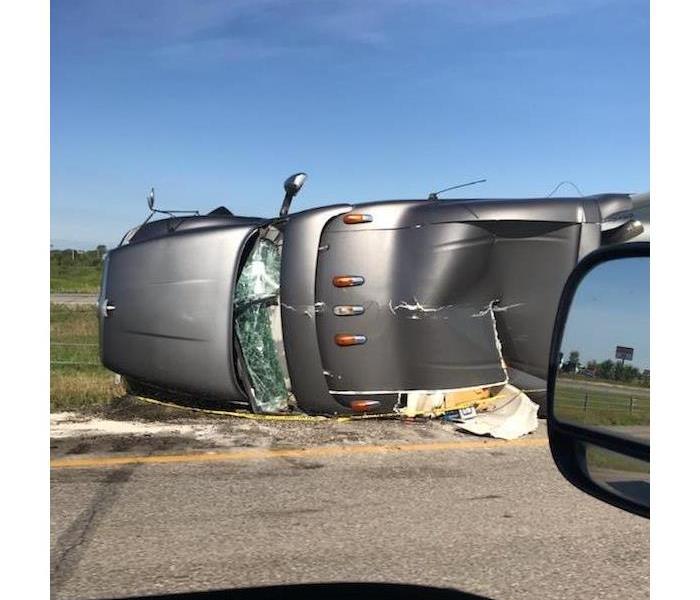 Our team out helping the damages in Iowa!
Our team out helping the damages in Iowa!
Over the past couple weeks, our storm team here at LaGrange Park/N. Riverside has been out assisting those who were hit with damage from the bad storm that went through Iowa. Our team has been working on a major project at one of the local hotels nearby. Our commercial large loss division is composed of the best of the best in restoration. Our commercial operations manager has been supervising the job every since we started down in Iowa. Our team was about to dispatch trained production professionals, and cut costs through the strategic placement and oversight of temporary labor. Once our team got word there was going to be a major storming rolling through there, we had a team ready to go the day before. After the storm hit, out team drove over 3 hours to get out to the location where the commercial property was. On the way, our team was able to see all the damage first hand driving through Iowa. Our team described it almost as a "scary scene in a movie". There was semi-trucks turned over on the highway, full grown trees pulled out of the ground, entire roofs taken off of homes, broken homes, and many more disasters that put tears to their eyes. Our team knew that they needed to help fix Iowa, and be able to make it strong again. To this very day, our team is still out in Iowa assisting the major commercial loss that has taken place, and they will continue to work in order to get the operation up and going again. We here at SERVPRO are always faster to any size disasters!
Hurricane Hazards
8/4/2020 (Permalink)
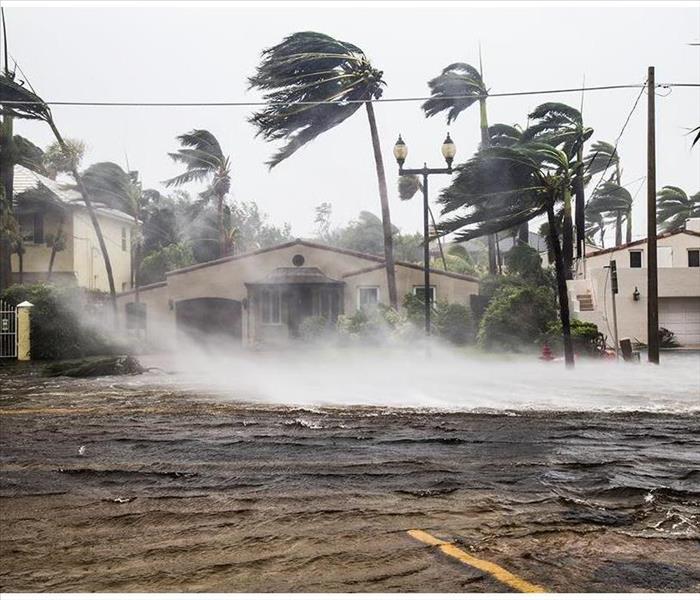 Make sure you are prepared.
Make sure you are prepared.
Hurricane season is upon us, and there are several named storms that have developed in the Atlantic, Caribbean and Gulf of Mexico. On average, there are about 12 tropical storms that will develop between June 1st and November 30th. Of those 12 storms, 6 of them will become hurricanes according to the National Weather Service. We know that hurricanes can be life-threatening, and they can cause a serious amount of property damage. The National Weather Service lists the following as potential "hurricane hazards".
Storm surge: is the abnormal rise of water generated by a storm's winds. This hazard is historically the leading cause of hurricane related deaths in the United States. Storm surge and large battering waves can result in large loss of life and cause massive destruction along the coast. It can also travel several miles inland, especially along bays, rivers and estuaries.
Flooding: from heavy rains is the second leading cause of fatalities from landfalling tropical cyclones. Widespread torrential rains associated with these storms often cause flooding hundreds of miles inland. This flooding can persist for several days after a storm has dissipated.
Winds: from a hurricane can destroy buildings and manufactured homes. We also see that signs, roofing material and other items left outside can become flying missiles during a hurricane.
Tornadoes: can accompany landfalling tropical cyclones. They typically occur in rain bands well away from the center of the storm.
Dangerous waves: produced by a tropical cyclone's strong winds can pose a significant hazard to coastal residents and mariners. These waves can cause deadly rip currents, significant beach erosion and damage to structures along the coastline. This is even when the storm is more than 1,000 miles offshore.
With this all being said, preparation is the best protection against the dangers of a hurricane. Make sure you plan an evacuation route and your emergency plan, take inventory of your property and take steps to protect your home or business.
Tornado Season
8/4/2020 (Permalink)
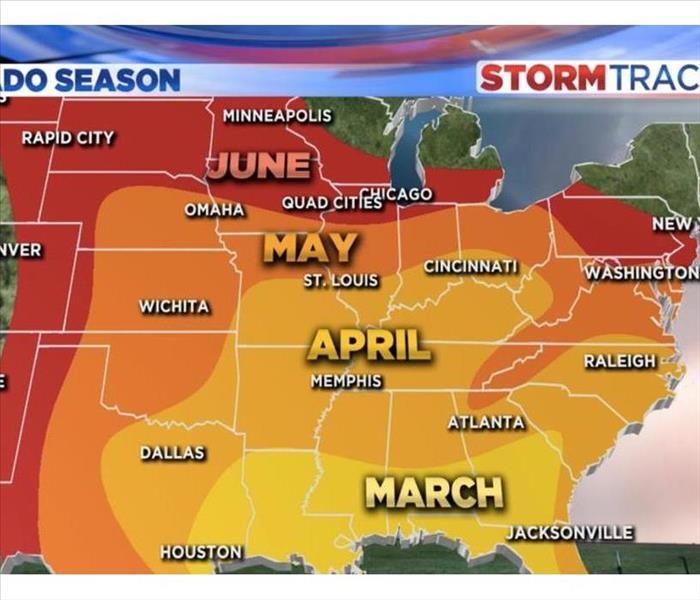 Check this out!
Check this out!
Tornadoes can occur year-round anywhere over the lower 48 of the United States, but the spring to summer period is prime time for severe thunderstorms that spawn the violent swirling columns of air. Building warmth and surging humidity are key ingredients for thunderstorms which, when severe, can evolve to produce tornadoes.
Severe thunderstorms will typically form when we get warm, moist air from the Gulf of Mexico clashing with cool air from Canada and sometimes dry air from the deserts. We often see the most tornadoes develop from central Texas, northward through the Nebraska and Iowa area, which is referred to as "Tornado Alley".
In order for severe thunderstorms to form, there must be a mechanism for air to rise in vigorous fashion. As a column of air rises through the atmosphere, it cools and causes moisture within to form the towering clouds we see as thunderstorms. The more moisture available and the cooler the air is aloft, the more efficient and potentially the more violent this process is. A push of dry air or cooler air from the outside can also intensify this process.
Any time there is a surge in temperature and humidity levels, combined with the approach of cooler and drier air thunderstorms can erupt. the most dramatic time of the year for this is in the spring to early summer. The peak for severe weather and tornado season is from April through June. Areas of the country that typically warm up the fastest with an ample supply of moisture are usually the most likely areas for early-season severe thunderstorms and tornadoes.
How a Blizzard Can Harm a Home
11/12/2019 (Permalink)
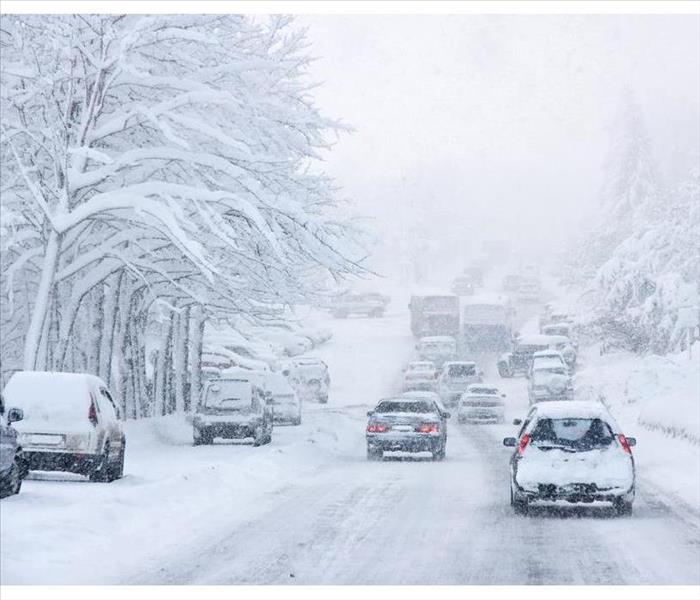 A winter storm can become dangerous, harming parts of your home.
A winter storm can become dangerous, harming parts of your home.
How a Blizzard Can Harm a Home
As the temperature drops, winter emerges, with the beauty and strength of snow and ice. While a breathtaking season, it is also one with power and the potential for destruction. Therefore, winter storm damage possesses a major concern for homeowners in Prospect Heights, IL. You may grow concerned about how to protect your property and keep the integrity of your roof intact. Consider these three things as you prepare for this cold juncture.
1. Are Ice and Snow Harmful?
A blizzard is an intense weather system, combining ice, snow and wind. These three powerful forces can wreak havoc, causing destruction and requiring repairs. With winds over 35 mph, they have the ability create the following issues:
- Form ice dams
- Ruin siding
- Shatter glass
- Collapse the roof
- Knock down trees
Try to trim branches, clean gutters and inspect the rooftop during autumn. That could help prevent some of these larger problems.
2. Who Do You Call?
Despite your best efforts, the winter storm may still harm something; thus, when the skies clear, immediately contact a water and storm restoration company. If the roof gave in, leave the premises. At that point, the place is unstable, and people should not be inside. When the experts arrive, they can evaluate the system's impact on your place. At this time, they can survey the damage, place tarps on the roof and begin to clean up your belongings.
3. What Can You Do?
Roof damage is a big process, so prepare yourself for a long wait. Meet with your construction manager to discuss a time frame, and visit the site frequently to see progress. In addition, during this time, allow the specialists to help with question as well as recovering your personal items. They can advise on best practices.
As the winds pick up and ice falls, a winter storm can become dangerous, harming parts of your home. Be patient, and call in professionals to restore the premises. Within time, the team can have your place looking "Like it never even happened."
Is Storm Damage Tax Deductible?
10/26/2019 (Permalink)
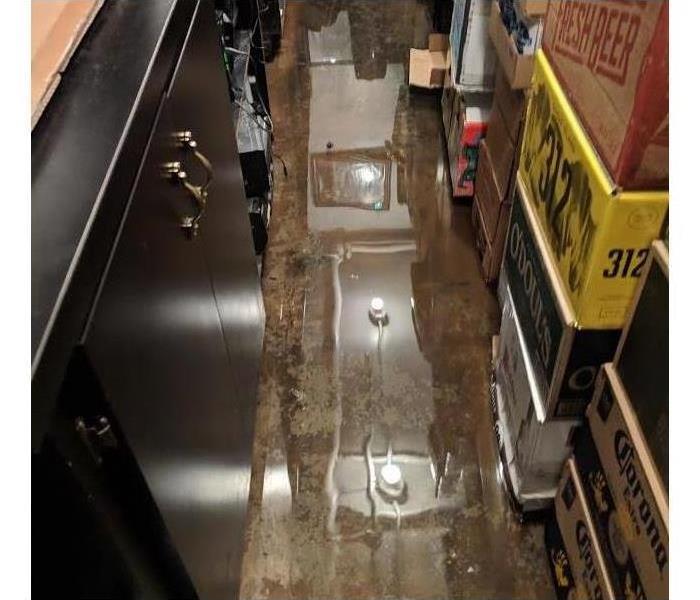 Flood damage in Arlington Heights, IL
Flood damage in Arlington Heights, IL
If your commercial property or business has suffered a loss from natural (and some man-made) disasters in Arlington Heights, IL, your actual financial loss may be tax deductible. The rules will vary based on the circumstances, but if you are armed with the right information, you can save your company a bunch of tax money at a time when it most needs it.
What Counts As Storm Damage?
If your loss was from a disaster, the IRS allows what’s called a casualty loss deduction. A casualty in federal tax law is a “sudden, unexpected, or unusual loss or damage to some property” that’s owned by your business. Additionally, the damage must be from a verifiable event, including
- Earthquakes
- Flood damage
- Hurricanes and severe storms
- Lightning
- Riots
- Tornadoes
- Volcanic eruptions
There are identifiable causes of casualty losses that won’t qualify, such as accidents, termite damage, deterioration and normal wear-and-tear. Typically, the rules covering storm damage loss are more liberal for businesses than for individuals. Also, the losses can usually be written off by businesses even if they don’t itemize.
What Are Federal Disaster Declarations?
When the federal government declares a disaster, both tax write-offs and financial assistance usually becomes much more generous. For instance, while most losses are recorded in the present tax year, a presidential disaster declaration means you can write it off retroactively, putting relief funds into your hands far more quickly. State governors can also declare disasters, although this won’t impact federal relief.
How Is the Write-Off Applied?
A few IRS publications might be used to address your storm damage losses. Publication 547 is usually key to understanding how you can write off the damage and discusses casualties, disasters and thefts, while Form 4684 is used to file for relief. However, if the losses could be covered by insurance, the IRS will disallow your write-off.
Once you’ve experienced a loss from a disaster in Arlington Heights, IL, call a professional storm cleanup company for immediate mitigation of further damage. When the situation has been stabilized, they’ll begin the process of cleanup and restoration so you can return to normal operations and put it all behind you.
4 Tips To Flood-Proof Your Home
9/10/2019 (Permalink)
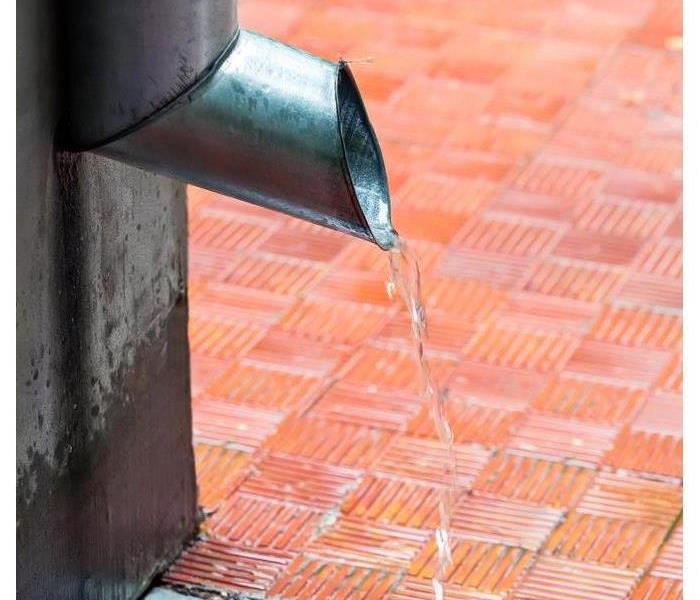 Making sure downspouts and drains are not clogged can help with water runoff in the event of a flood
Making sure downspouts and drains are not clogged can help with water runoff in the event of a flood
Safety Tips For Homeowners To Protect Their Homes
As a homeowner, safeguarding your home against natural disasters is paramount, and flood safety should be a priority. Flooding is not only the most common natural disaster in the U.S., it’s also one of the costliest weather-related disasters. Flooding is estimated to have caused over $260 billion in damage between 1980 and 2013. Homeowners in Arlington Heights, IL, will especially benefit from these safety tips to protect their homes.
1. Reconsider renovations. For example, if your driveway needs to be repaved, consider installing porous paving to help slow down water runoff. If you’re springing for a new lawn, make sure to grade it away from the house so as to direct water flow into the street gutter and not your home.
2. Maintain upkeep. You can flood proof your home by doing simple maintenance upkeep such as checking pipe valves and ensuring gutters are clear to prevent ice dams. Making sure downspouts and drains are not clogged can help with water runoff in the event of a flood, or even heavy rainfall.
3. Prioritize cleanup. Almost as important as protecting your home for flood safety is post-flood follow-up. To avoid water damage and mold, seek water-damage repair experts immediately. You won’t be the only one seeking help after such a natural disaster, so be sure to act early.
4. Reorganize clutter. Move any electronics, expensive rugs and furniture to upper levels if possible. If it’s not, simply raise them off the floor. Elevating major appliances onto sturdy materials such as concrete blocks can be helpful as well. Make sure things such as sockets and switches, as well as circuit breakers, are at least a foot above the estimated flood level for the area.
Make flood safety a key priority when you purchase or renovate a home. Being better prepared for such natural disasters ahead of time will often be more effective than trying to belatedly deal with the aftermath.
Types of Tax Deductible Storm Losses
8/20/2019 (Permalink)
 Storm damage in Arlington Heights, IL
Storm damage in Arlington Heights, IL
Four Fundamental Areas of Storm Loss
Commercial properties are expensive to maintain and even more expensive to repair. When seasonal storms kick up and create significant losses for businesses, it can leave many owners looking for relief. Thankfully, when tax season rolls around, storm damage might actually be tax deductible. However, that depends on a couple of factors. First, do you have commercial insurance? Second, did you use your policy to make a claim? If you didn't, then you will not be able to make a deduction for losses accrued, but if you did, then you should have no problem come tax time. However, you will still need to understand the four fundamental areas of storm loss to record and claim everything properly.
1. Wind
Wind damage can account for a lot of property loss, especially when tied to significant storms, like hurricanes and tornadoes. This type of damage can account for many losses, such as broken windows, lost shingles and sheathing as well as damages to property landscaping.
2. Water
The most common form of storm damage tends to relate to water losses. Flooding and excessive rainfall can lead to significant issues, from foundational problems to roof leaks and more. While not every area requires flood insurance, it is a wise purchase for those businesses at risk to help offset potential recovery expenses.
3. Fire
While it may seem unlikely, storms can lead to building fires. For example, flooding can lead to electrical disturbances, which can spark a fire. Also, and more commonly, lightning strikes can cause sudden rooftop blazes.
4. Restoration
After storms have settled and the damages assessed, you will need to contact your insurer and a storm restoration specialist in the Arlington Heights, IL, area. While you may not want to make an insurance claim for the losses you incurred during the storm, the only way to file for deductions is to use your insurance policy first. Then, you can file deductions for the percentage of the recovery and restoration you actually paid for.
Storm damage can be expansive and costly to mitigate. However, if you file a claim and call for assistance, you can recover some losses through deductions.
Vulnerable Areas of Your Property in a Winter Storm
7/24/2019 (Permalink)
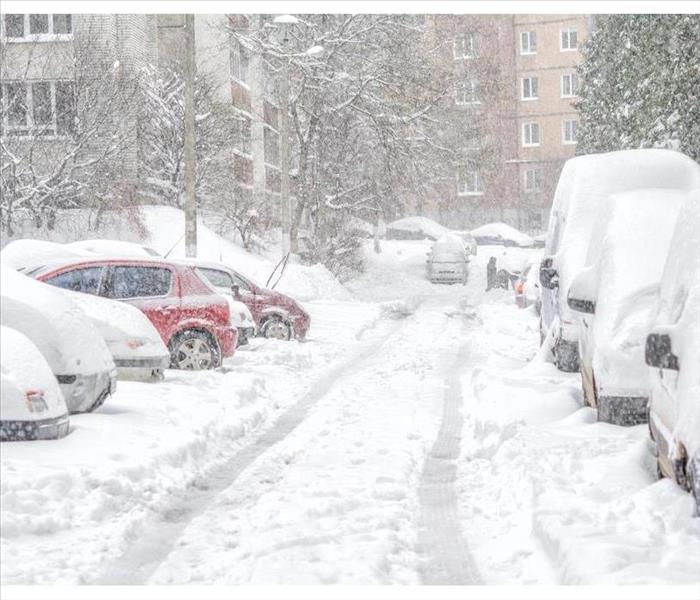 Winter storm in Prospect Heights, IL
Winter storm in Prospect Heights, IL
Vulnerable Areas of Your Property in a Winter Storm
The damage that can occur due to a winter storm can be obvious at times, but at other times, it can be subtle. You may not notice it at first unless you are specifically looking for it. If you do have storm damage, you have only a limited time to file an insurance claim, so it is best to inspect your residential property in Prospect Heights, IL, and file any necessary claims as soon as you can.
Specific areas of vulnerability around your property include the following:
- Trees
- Gutters and siding
- Roof
You should inspect these areas carefully as soon as possible after a storm.
Trees
Overgrown tree limbs can break due to the high winds, heavy snows, and ice buildup that often accompany a blizzard. A fallen tree limb can cause damage to your roof, your vehicle, and anyone who happens to be standing underneath at the time that it falls. Keep in mind, however, that a tree limb may break off during a storm but not fall for some months afterward. Therefore, it is best to be proactive in inspecting trees for damage and having broken limbs removed.
Gutters and Siding
The exterior of your home is built to stand up to a lot of punishment from the weather. Nevertheless, factors present during a winter storm, such as ice, moisture, and high winds, can strip the siding or gutters from your home. Be sure to inspect any possible damage, and be sure to have any missing structures replaced as soon as possible. Missing gutters or siding leave your home vulnerable to water damage.
Roof
Roof damage from a storm can be dramatic, such as a cave-in from a broken tree limb, or subtle, such as missing shingles or roof tiles. Either way, the damage needs to be assessed and repaired as soon as possible.
It can be tempting to put off dealing with damage from a winter storm until spring, but that may only make matters worse. If you feel overwhelmed, don't hesitate to enlist the help of a storm damage restoration company.
When Storms Hit, SERVPRO Is Ready.
6/28/2019 (Permalink)
When a major storm hits, it may overwhelm local restoration companies. SERVPRO of Arlington Heights/Prospect Heights can scale our resources by accessing the equipment and personnel of 1,700 Franchises. We can also access Disaster Recovery Teams that specialize in major storms and catastrophic events.
SERVPRO of Arlington Heights/Prospect Heights specializes in storm and flood damage restoration. Our crews are highly trained and we use specialized equipment to restore your property to its pre-storm condition.
Faster Response
Since we are locally owned and operated, we are able to respond quicker with the right resources, which is extremely important. A fast response lessens the damage, limits further damage, and reduces the restoration cost.
Resources to Handle Floods and Storms
When storms hit the Prospect Heights land area, we can scale our resources to handle a large storm or flooding disaster. We can access equipment and personnel from a network of 1,650 Franchises across the country and elite Disaster Recovery Teams that are strategically located throughout the United States.
Have Storm or Flood Damage? Call Us Today 847-637-3445
3 Things You Should Know About Storm Insurance
5/7/2019 (Permalink)
 In order to keep your business running smoothly after a disaster, it is important to have a storm insurance policy
In order to keep your business running smoothly after a disaster, it is important to have a storm insurance policy
A Few Things you Should Keep in Mind When You Buy Insurance for Your Business
If you operate a business in Arlington Heights, IL, then you likely already have insurance coverage. If you don’t, then it is a good idea to acquire it, as it can save you a lot of trouble, and money, if you experience an emergency or natural disaster. Here are a few things that you should keep in mind when you buy insurance for your business.
1. Not All Plans Are the Same
While you might think that one storm insurance policy is just as good as another, this is not necessarily the case. Various companies may have coverage that differs significantly. It is important to determine what is included in your policy as well as how much financial assistance you will be entitled to if your building is damaged. Many companies don’t include floods or hurricanes in their policies, so you may need to purchase a separate plan for these.
2. You Might Be Required to Pay a Portion of the Repair Cost
If hurricanes or floods are included in your storm insurance policy, you still might not be able to receive the full amount of the damage costs. Large scale disasters like these can cost insurance companies a lot of money, so they often require the policyholder to pay a certain percentage of the claim.
3. Your Claim Can Be Affected by the Condition of Your Building
Severe damage might need to be repaired by an emergency remediation service. If the cause of the damage is covered in your policy, then you may not be required to pay for these repairs. However, if you don’t keep up with regular maintenance of your building, then your insurance company might conclude that damages were caused by existing problems and refuse to pay for these costs.
In order to keep your business running smoothly after a disaster, it is important to have a storm insurance policy. It can save you money and help get your building back in working order if it has been damaged.
How To Deal With Black Water After a Flood
5/2/2019 (Permalink)
 Flood Damage at a downtown home in Arlington Heights, IL.
Flood Damage at a downtown home in Arlington Heights, IL.
Experiencing a flood in Arlington Heights, IL , can be a traumatic experience on its own, but the stress may continue as you deal with the aftermath of any water damage affecting your home. If standing water remains in the area, it is considered black water. This situation calls for immediate action in order to protect your home and family members that may be exposed to this water.
What Is Black Water?
Black water is any type of contaminated water that may contain the following harmful bacteria:
• E. Coli
• Hepatitis
• Leptospira
• Salmonella
• Giardia
It is considered a health risk for anyone who comes into contact with it and can result in serious illness or even death. Overflowing sewage water, leaking toilet water, and remaining flood water are all examples of this type of polluted water.
What Are the Health Risks?
To avoid further water damage or any threat to your or your family’s health, you need to address the issue of standing, infected water immediately. Make sure to contain the contaminated water and remove yourself and other people or animals from the area as quickly as possible. If people or animals come into contact with the contaminants in this water, they may experience any of the following conditions:
• Diarrhea and abdominal cramps
• Chills, lack of appetite, or fever
• Nausea and vomiting
• Hepatitis, Tetanus, Weil’s disease, or infection
• Death (in extreme cases)
What Should You Do?
If there is any standing water remaining after a flood, you should always assume that it is contaminated water. Do not try to remove the water from your home yourself. Quickly contact a restoration specialist to assess the situation and take the appropriate action.
These professionals will have the expertise and equipment to fully remove any harmful pollutants and bacteria from your home. You won’t need to worry about any lingering contamination since these specialists are trained in how to effectively sanitize your house and deal with any other water damage that may have occurred.
4 Facts You Should Know About Your Commercial Generator
5/2/2019 (Permalink)
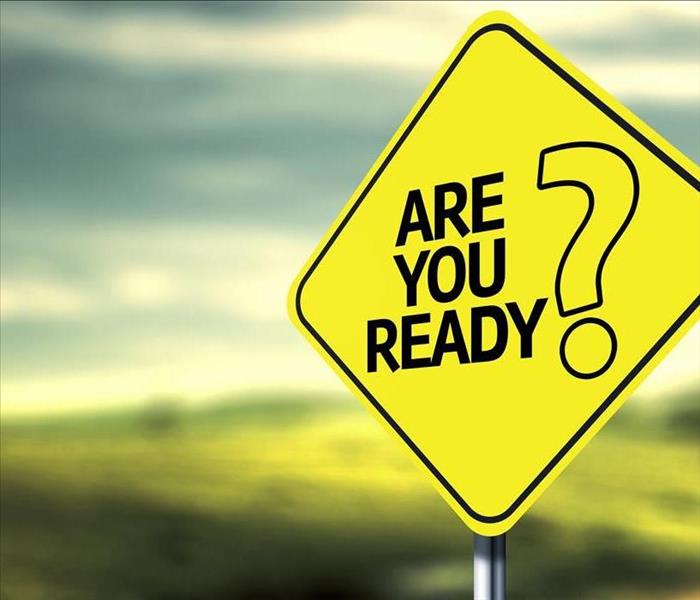 In case of a Power Outage caused by Storm Damage we need to understand how a generator works if we need to rely on one.
In case of a Power Outage caused by Storm Damage we need to understand how a generator works if we need to rely on one.
Commercial generators, like residential generators, are designed to provide power to your business in case your power ever goes out. Since your businesses in Arlington Heights, IL, likely has higher power requirements than your home, a commercial model will often have more efficient cooling components, a larger engine, and the ability to produce more power.
Understanding how a generator works is important in case a power outage or other emergency causes your business to rely on one.
1. There Are Two Main Fuel Types for Generators
If you’re looking at commercial generators for your business, you will need to choose between diesel and gas fuel types. Diesel models are often more expensive and noisy. However, they require less maintenance and emit less carbon dioxide. Gas generators have a shorter lifespan and are a potential fire hazard, but they are connected to a gas line which means they have a consistent fuel source.
2. The Running Time Will Depend on Your Generator’s Type
When choosing generators, you can go with a portable or permanent model. While portable models will work for many small businesses, their run time is typically only a few hours. Permanent generators can run for very long periods of time, so if outages are common in your area you’ll want to go with a permanent model.
3. Maintenance is Key
To prevent needing to call a restoration company due to damages caused by your generator, it is important that you look for common generator problems like battery failure and leaks before a power outage occurs.
4. Carbon Dioxide Is a Risk
Always keep your generator a safe distance away from the building and allow for plenty of ventilation in order to avoid carbon dioxide poisoning.
A commercial generator is essential for providing power to your building in the case of an outage or black out. Keep these four facts in mind so you can choose the right model for your needs and keep it running in good repair!
Winter Storm Tips
4/26/2019 (Permalink)
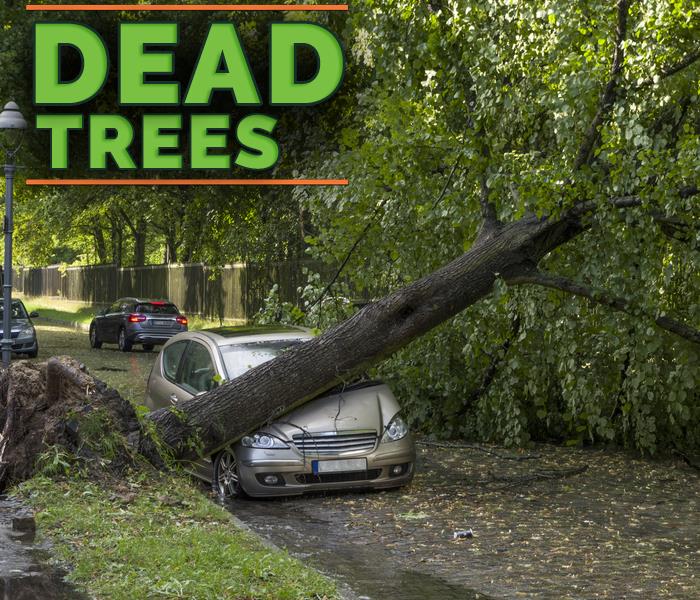 Keep your greenery trimmed for better safety in a storm.
Keep your greenery trimmed for better safety in a storm.
Facing an impending winter storm in Arlington Heights, IL? Whether it is a blizzard or some other kind of event, winter weather is no joke - keep your family and your home safer with these tips:
1. Keep supplies handy. Make a list of necessities and winter tools that you will need to brave the storm. If you have time, go shopping for the ones you are missing, and then find a place in your house to keep everything so you know where supplies are in case you need them when the storm hits.
2. Check your roof, gutters and siding. You may not think it would be the case, but all of these parts of your house can be damaged in a winter storm. Make sure they are all in good working shape before the weather gets dangerous.
3. Insulate your pipes. A burst pipe can cause a real disaster in a storm. Make sure that yours are insulated against cold temperatures.
4. Seal any air leaks. Air leaks are not a good sign, as they can lead to a home that is subject to extremely cold temperatures. You might just find that you save on energy costs when you fix these leaks, as well.
5. Trim trees. If an overgrown tree branch falls in a storm, your home, property and family are all at risk of being in a dangerous situation. Keep your greenery trimmed for better safety in a storm.
Now that you know how to prepare for a winter storm, it is time to learn what to do if roof damage or other issues should occur despite your best preparation efforts. A reliable residential storm damage company can help you with water destruction and many other effects of a storm. It is better to prepare for the worst than to be stuck with no knowledge of how to handle damage if it does occur.
Polar Vortex 2019 SERVPRO
1/29/2019 (Permalink)
 Plan to plan to have a plan!
Plan to plan to have a plan!
As a polar vortex rolls across the United States in this week, there is a point when we have a lower temperature than Antarctica. Take a second to think about that.
Although temperatures in Arlington Heights and Chicago-land drop quickly, we will fair better than other areas.
Unfortunately for homeowners and business owners in our area, the drop will still wreak havoc with their pipes. Being overwhelmed on what to do is going to be the first thought. That is why you need a plan and a company.
Many homes and businesses will call about burst pipes, flooded basement and closed office due to sprinkler breaks and will be put on wait lists.
Although it does seem like some of these burst pipes will be inevitable, there are a few precautions that you can take to avoid a major loss when the temperatures drop.
Insulate Pipes
Insulating your pipes is inexpensive compared to the cost of a water damage and is easy to do yourself. This is the first step when preparing your house for cold weather.
Insulate Everything Else
Make sure there is plenty of insulation in your attic and crawlspace. This will keep everything in your house warmer including your pipes.
Run Faucets
When you know that there is going to be a big temperature drop, like the recent polar vortex, don't give water a chance to freeze by running it. The smallest stream from a faucet will keep the water moving and prevent freezing. This is especially important to do with faucets that are served by exposed pipes.
Keep Garage Door Closed
If there are pipes in your garage, you need to keep it as warm as possible. Do not leave it open and try to open it only when absolutely needed.
Remove, Drain, and Store Hoses
Water in hoses can freeze and start a chain reaction that will lead back into your house. Prevent this by removing all hoses from the house and draining them.
Open Cabinets
Open cabinets in the kitchen and bathroom to get some warmer air moving beneath your sinks.
Keep House Temperature Consistent
Most people drop the temperature in their house down at night. When temperatures are especially cold, it is best to keep the house at a higher consistent temperature. The price of heat is nothing compared to the price of a burst pipe.
Set Temperature When Out of Town
If you will be out of town during the winter, make sure to keep the temperature of your house above 55 degrees at the very least.
Following these simple steps can go a long way in preventing a major water damage. For the losses that cannot be prevented, remember to call us at SERVPRO of Arlington Heights/Prospect Heights at 847-637-3445!
Summer Storm Tips
7/31/2018 (Permalink)
During the summer months, our minds are preoccupied with vacationing, grilling burgers with the family, and focusing on getting that bronze tan at the poolside. Yet, most of us leave our most valued possessions unprepared for the alarming and unpredictable summer storms: our homes.
Each year, thunderstorms alone cause an astonishing $15 billion in property damage. Summer and spring seasons are the most vulnerable to these destructive and frightening storms. Hailstorms result in approximately $1 billion of property damage a year. Thunderstorm winds can reach over 100 mph with an outcome of severe roof and house siding damage. Flooding causes billions of dollars a year in damage to homes and sadly some result in total loss of residences.
Here are some summer time safety tips to keep in mind during summer storms:
- Know the safest structure of your home to go to during a severe storm such as a basement, underground cellar, or even the most inner part of your home away from windows.
- Take summer storm warnings and alerts seriously, especially tornado and hurricane warnings! Tornadoes and hurricanes can lead to total property loss and even death.
- Invest in storm windows.
- Contact your insurance company to be more familiar with your policy. Most home insurers do not cover flooding damage.
- Cut down any unwanted trees or limbs and get your trees trimmed before summer storm season. Trees and branches can fall on your property and damage the siding or windows due to those powerful 100 mph thunderstorm winds.
- Get routine maintenance on your roof and the foundation! Cracks in the roof are the number one leading cause to flooding damage.
Summer storms can happen at any time. Make sure you home is ready, and your family is safe. Unfortunately, we all know things happen, even to the most prepared home. SERVPRO of Arlington Heights/Prospect Heights is here to help! Give us a call at 847-637-3445 for all your water damage needs.
Tornado Safety Myths
6/13/2018 (Permalink)
According to the study done by The Weather Channel. Each year in the U.S., 1,200 tornadoes on average kill 60 people, injure 1,500, and cause roughly $400 million in damages, putting long-term average tornado losses on par with hurricanes. With that being said, you need to know the difference between tornado fact and fiction.
- Southwest corner of your home/building/shelter is the safest location - In 1887 John P. Finley wrote a book on his observations of his tornado research. While he published some ground breaking information on tornadoes he also helped created this tornadoes myth. John believed that tornadoes only traveled in a northeast direction and that derby they created would be carried in the direction of its propagation. The 1997 F5 Jarrell tornado is a prime example of his misconceptions since that tornado moved in a south-southwesterly direction. It's recommended that you always seek shelter in the lowest floor of a building, preferably under an I-beam or staircase, regardless of the type of building you're in.
- Open all the windows in your home when a tornado warning is issued - This is an extremely dangerous myth because it takes away critical minutes that could be used to reach shelter. It used to be widely believed that you needed to open your windows during a tornado to equalize pressure and prevent your house from exploding. A violent tornado will only have a 10% drop in pressure which isn't anywhere near enough to cause your home to explode. Ignore your windows and seek shelter immediately when a tornado warning is issued.
- A highway overpass is an excellent tornado shelter - This myth gained huge traction in 1991 when a TV crew survived a tornado unharmed by sheltering under a overpass in El Dorado, KS. This event had nationwide coverage with video of the event and that helped perpetuate this myth to a dangerously high status. The conclusion for scientific evidence from the Oklahoma outbreak in 1999 actual proved that overpasses are actually one of the worst places to seek shelter during a violent tornado; mostly due to the wind tunnel effect that can accelerate flying derby speed even during weak tornadoes.
- You can outrun a tornado via a vehicle - The theory behind this myth is a vehicle can travel faster than the average tornado, but the key phrase is average. There is no way for someone to know the travel and wind speed of a tornado just by looking at it. Plus the flooding, hail, and flying derby from a tornado can put someone in a vehicle in danger. The official directive from the National Weather Service is if you spot a tornado nearby to abandon your vehicle and seek shelter in a nearby building, culvert or ditch.
- A brick or stone building can protect me from a tornado - While a brick or stone building can provide better protection during tornado a violent only can easily turn a brick or stone building into a pile of rubble. It's recommended that you always seek shelter in the lowest floor of a building, preferably under an I-beam or staircase, regardless of the type of building you're in.
- If a tornado isn't coming directly towards me I'm safe - In the past it was common belief that a tornado would only travel in a northeasterly direction. While it's true that most tornadoes will move northeast this is most due to the direction the storm is traveling. Tornadoes are erratic, unpredictable, and can come from any direction.
In the even a tornado strikes, SERVPRO is always here to help!
Tornado Season Tips
6/8/2018 (Permalink)
Tornado season is just ahead of us, and the Red Cross has listed some great tips to keep in mind during a tornado.
- Identify a safe place in your home where household members and pets will gather during a tornado: a basement, storm cellar or an interior room on the lowest floor with no windows.
- In a high-rise building, pick a hallway in the center of the building. You may not have enough time to go to the lowest floor.
- In a mobile home, choose a safe place in a nearby sturdy building. If your mobile home park has a designated shelter, make it your safe place. No mobile home, however it is configured, is safe in a tornado.
If you find yourself outside during a tornado, seek shelter in sturdy building or basement. If you cannot quickly walk to a shelter, immediately get into a vehicle and try to drive to the closest sturdy shelter. Stay away from bridge/highway overpasses. strong winds and flying debris occurs while driving, pull over and park, keeping your seat belt on and engine running. Put your head down below the windows, covering your head with your hands and a blanket.
Another way to keep your family safe is to know the difference between and tornado warning and a tornado watch. According to the National Weather Service, a tornado watch means that a tornado is possible in the area. A tornado warning means that a tornado is already occurring or will occur soon. You need to immediately find a safe place.
Your safety is your most important thing during a tornado. SERVPRO of Arlington Heights/Prospect Heights is here to help for all your cleanup needs in the event of a tornado. Give us a call at 847-637-3445.
How Hail Damage Can Affect Your Roof
5/24/2018 (Permalink)
What is hail? "Hail is large, layered ice particles, often spherical in shape, which are produced by thunderstorms having strong, tilted updrafts. Hailstorms form within a unusually unstable air mass, that is, an air mass in which the temperature falloff with height is much greater than normal." (The Weather Channel)
How can hail damage your roof? "Basically, hailstones one inch in diameter begin causing damage to some of the older, thinner roof products. Therefore, from a roof damage perspective, we believe the hail size threshold for issuing a severe thunderstorm warning can be increased from ¾ of an inch to one inch in diameter." (Travelers Insurance) Hail larger than 0.75 inches is considered large enough to cause serious damage in the United States. Per NOAA, hailstones can fall at speeds up to 120 mph. The largest hailstone ever recorded in the United States was 8 inches in diameter, weighing nearly 2 pounds.
How do you know if you have roof damage from hail? Set up a ladder to your roof to examine the top of the roof. Check the ridge cap of the roof for dents. This area of the roof will receive the most damage from hail since it is flat and will take a direct hit in a storm. Look at the shingles. Check the whole shingle, as well as the edges, for signs of damage.
If climbing up a ladder is not your thing, call SERVPRO of Arlington Heights/Prospect Heights at 847-637-3445, and we will take a look at your roof for hail and other roof damage for you.
Tornado Safety Myths
5/24/2018 (Permalink)
According to the study done by The Weather Channel. Each year in the U.S., 1,200 tornadoes on average kill 60 people, injure 1,500, and cause roughly $400 million in damages, putting long-term average tornado losses on par with hurricanes. With that being said, you need to know the difference between tornado fact and fiction.
- Southwest corner of your home/building/shelter is the safest location - In 1887 John P. Finley wrote a book on his observations of his tornado research. While he published some ground breaking information on tornadoes he also helped created this tornadoes myth. John believed that tornadoes only traveled in a northeast direction and that derby they created would be carried in the direction of its propagation. The 1997 F5 Jarrell tornado is a prime example of his misconceptions since that tornado moved in a south-southwesterly direction. It's recommended that you always seek shelter in the lowest floor of a building, preferably under an I-beam or staircase, regardless of the type of building you're in.
- Open all the windows in your home when a tornado warning is issued - This is an extremely dangerous myth because it takes away critical minutes that could be used to reach shelter. It used to be widely believed that you needed to open your windows during a tornado to equalize pressure and prevent your house from exploding. A violent tornado will only have a 10% drop in pressure which isn't anywhere near enough to cause your home to explode. Ignore your windows and seek shelter immediately when a tornado warning is issued.
- A highway overpass is an excellent tornado shelter - This myth gained huge traction in 1991 when a TV crew survived a tornado unharmed by sheltering under a overpass in El Dorado, KS. This event had nationwide coverage with video of the event and that helped perpetuate this myth to a dangerously high status. The conclusion for scientific evidence from the Oklahoma outbreak in 1999 actual proved that overpasses are actually one of the worst places to seek shelter during a violent tornado; mostly due to the wind tunnel effect that can accelerate flying derby speed even during weak tornadoes.
- You can outrun a tornado via a vehicle - The theory behind this myth is a vehicle can travel faster than the average tornado, but the key phrase is average. There is no way for someone to know the travel and wind speed of a tornado just by looking at it. Plus the flooding, hail, and flying derby from a tornado can put someone in a vehicle in danger. The official directive from the National Weather Service is if you spot a tornado nearby to abandon your vehicle and seek shelter in a nearby building, culvert or ditch.
- A brick or stone building can protect me from a tornado - While a brick or stone building can provide better protection during tornado a violent only can easily turn a brick or stone building into a pile of rubble. It's recommended that you always seek shelter in the lowest floor of a building, preferably under an I-beam or staircase, regardless of the type of building you're in.
- If a tornado isn't coming directly towards me I'm safe - In the past it was common belief that a tornado would only travel in a northeasterly direction. While it's true that most tornadoes will move northeast this is most due to the direction the storm is traveling. Tornadoes are erratic, unpredictable, and can come from any direction.
In the even a tornado strikes, SERVPRO is always here to help!
Flood Safety Tips
5/23/2018 (Permalink)
Flood can happen anywhere, and without much of a notice. According to ready.gov “Just 6 inches of moving water can knock you down, and 1 foot of water can sweep your vehicle away.” Flood Watches and Flood Warnings are available to let you know what the weather is doing in your area. On average, more deaths occur due to flooding each year than from any other severe weather related hazard.
First of all flood watches and flood warnings are two separate alerts to warn about the weather in your area. A flood watch is to make you aware that conditions are possible for flooding. A flood warning means you need to take action to keep yourself and your family safe.
Ready.gov has some safety tips in case you are in an area where there is a flood warning.
- Move immediately to higher ground or stay on high ground.
- Avoid walking or driving through flood waters. Turn Around, Don’t Drown! Just 6 inches of moving water can knock you down and 1 foot of water can sweep your vehicle away.
The water from a flood is only one of the risks. Water and electricity do not mix. In the event of a flood, downed power lines are also possible. Stay away from all power lines. Calling your local utility company is the only thing you should do in the event you see downed lines. Your appliances, if they get wet, should also not be used until they have been inspected by a licenses electrician. The fuse box in the house should be avoided as well as long as there is water in the home.
We may not be able to control weather conditions, but we can take all possible precautions to ensure our personal safety and protect our homes from severe damage. According to ready.gov the following tips can help prepare you for a flood:
- Find out how vulnerable your home is to flooding by determining the elevation of your property.
- Evaluate your insurance coverage once a year to make sure your home is fully covered. As new construction grows in certain areas, more flood-plains are sometimes created.
- If your home is in a flood-prone area, contact the National Flood Insurance program to learn what mitigation measures you can take in advance.
- Contact your local emergency management agency to learn how to construct proper protective measures around your home.
- If you live in a flood-prone area, keep these materials on hand: sandbags, plywood, lumber, plastic sheeting, trash bags, shovels, work boots and gloves.
- Purchase a weather radio. These special, battery-operated radios cost as little as $20 and are available at many hardware and appliance stores and other retail outlets.
- Put together a disaster survival kit. Keep the following supplies near at hand and put them in a water-tight container: flashlight with extra batteries, battery-powered radio and weather radio, first aid kit, medicines, eyeglasses, drinking water, non-perishable foods, change of clothes, cash and credit cards, and copies of all important papers.
- Plan two evacuation routes in advance. Don’t wait until threatening weather conditions occur before trying to determine your route to safety. Be aware of streams, drainage channels and low areas in your region that are prone to flooding, so that your evacuation routes are not cut off.
- Do not park your vehicle near streams or rivers, especially during threatening weather conditions.
SERVPRO of Arlington Heights/Prospect Heights wants you to stay safe first and foremost. However, flooding happens, and we are here to help. If you have flood damage in your home, call us at 847-637-3445 for all your water damage needs.
Hurricane Preparedness
5/17/2018 (Permalink)
Did you know that 88% of deaths from hurricanes and tropical storms are due to the water, not wind according to The Weather Channel? According to the National Hurricane Center, storm surge, rainfall flooding, high surf, and deaths just offshore (within 50 nautical miles of the coast) combined for 88 percent of all deaths in the U.S. from hurricanes, tropical storms or tropical depressions from 1963 to 2012. The storm surge, the rise in water levels from the tropical winds piling water toward the coast just before and during landfall.is considered the most deadly part of a hurricane.
Knowing that the water is the most dangerous part of the hurricane, we encourage you to create a plan and share the plan with your family. Here are some tips from ready.gov:
Prepare
- Talk About Hurricanes —Spend time with your family discussing why hurricanes occur. Explain that a hurricane is a natural event and not anyone’s fault. Use simple words that even young children can understand.
- Know Your Risk —Find out if you live in a hurricane evacuation area. Assess your risks from a storm surge, flooding or wind damage that may accompany a hurricane.
- Practice Evacuation Drills — Practice your family evacuation plan so that, during an emergency, you can evacuate quickly and safely.
- Learn Your Caregivers' Disaster Plan — If your child’s school or child care center is in an area at risk from hurricanes, find out how its emergency plans address hurricanes. Ask about evacuation plans and if you would be required to pick up your children from the site or from another location.
- Stay Informed — Use a NOAA Weather Radio or listen to a local station on a portable, battery-powered radio or television. Be ready to act if a Hurricane Warning is issued.
During a Hurricane
- Evacuate If Instructed To Do So —Evacuate if told to do so by local authorities or if you feel unsafe. If advised to evacuate, avoid flooded roads and watch for washed-out bridges. Local officials may close certain roads, especially near the coast, when effects of the hurricane reach the coast.
- Stay Indoors, If Not Evacuated — If you are not advised to evacuate, or are unable to do so safely, stay indoors, away from windows, skylights and doors. Continue to monitor weather reports and do not go outside until the storm has passed.
After a Hurricane
- Return Home Only When Authorities indicate It’s Safe — Listen for updates and instructions from local officials.
- Avoid Flood Waters — Water may be electrically charged from downed or underground lines. Avoid walking and driving through flood waters as well due to the fact just 6 inches of moving water is enough to knock you down. Fast moving water can also sweep your car away in the flow of the stream.
- Photograph The Damage To Your Property — By photographing your property, you can help assist with your insurance claim. This also helps assist the adjustor assigned to your claim to determine the coverage to your loss.
Hurricanes are a very serious, and can be deadly. SERVPRO of Arlington Heights/Prospect Heights would like to encourage you to make a family plan to keep your loved ones safe.






 24/7 Emergency Service
24/7 Emergency Service























